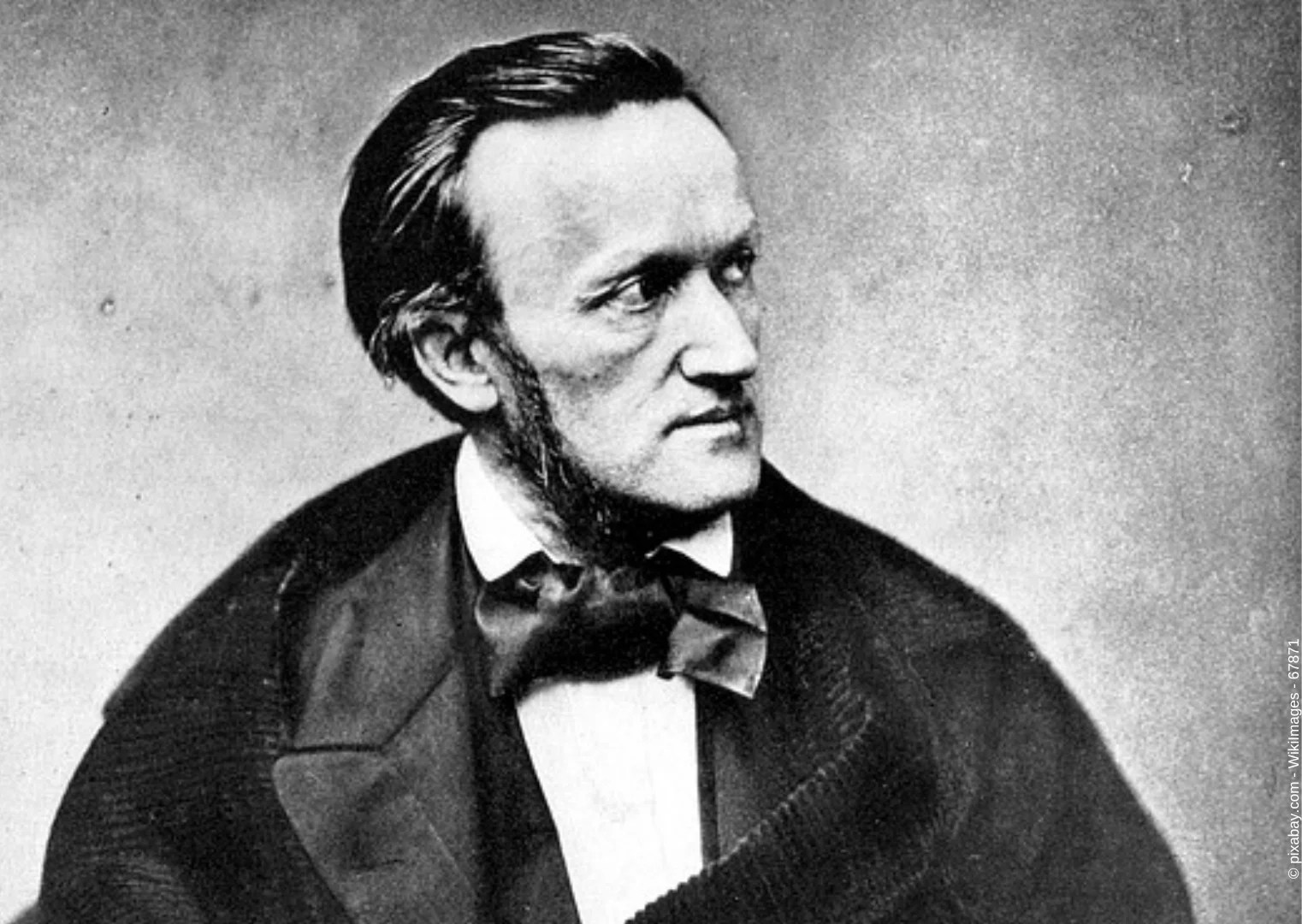Neuschwanstein Castle and the music of Richard Wagner

Most people know Neuschwanstein Castle as an inspiration for one of the 20th century’s great cultural figures: Walt Disney. Bavaria’s famous fairy tale castle is the role model for Disney’s Sleeping Beauty Castle. To really understand Neuschwanstein, however, we need to see how it was in its turn inspired by one of the great cultural icons of the 19th century. Neuschwanstein Castle is King Ludwig II’s homage to the operas of Richard Wagner.
Ludwig II came to the throne of Bavaria in 1864 as an unworldly and impressionable 18 year old. Growing up in Hohenschwangau, his father’s isolated neo-Gothic castle in the foothills of the Bavarian Alps near Füssen, he became enamoured of the operas of Wagner, with their epic tales of medieval German romance and knights and dwarves and the Holy Grail. As king, he became Wagner’s patron, even building a purpose designed opera house for his exclusive use (to the growing frustration of Bavaria’s government).
After the Austro-Prussian War placed Bavaria under the shadow of Berlin’s growing power, Ludwig II retreated ever further into a private fantasy world. Neuschwanstein Castle, his astonishing fantasy medieval castle on a lofty mountain perch above Hohenschwangau Castle and the romantic Pöllat Gorge, is the great expression of this.
Neuschwanstein is an epic tribute in stone and art to the world of Wagner’s operas. The breathtaking Byzantine Throne Room expresses Ludwig’s ideals of kingship infused with medieval and Wagnerian mysticism. It was intended as Neuschwanstein’s hall of the Holy Grail. The murals in the Singers Hall depict scenes from Parsifal. The upper courtyard and Minstrel’s Hall are inspired by stage sets from Lohengrin and Tannhauser. Parts of Neuschwanstein are even based on stage sets from Munich productions of Wagner seen by Ludwig, as painted by the artist Christian Jank.
Neuschwanstein Castle, like its sister palaces Linderhof and Herrenchiemsee, was built as Ludwig’s escape from a modern world he neither understood nor loved. But sadly for him, the world would not leave Ludwig in peace in his Bavarian retreat in the skies above Hohenschwangau. Growing increasingly concerned by his eccentric and profligate ways, his own government ministers forced him to abdicate the throne in 1886. He died in a still mysterious drowning accident shortly afterwards. His days in Neuschwanstein were short.
Today huge numbers of visitors from all over the world take the horse-drawn carriage uphill to Neuschwanstein Castle, or take time out from their Neuschwanstein Castle Tours to get the perfect picture of the stunning views from the Marienbrücke bridge. When doing so, it’s worth pausing for a second to reflect that this busy, international gathering point was intended by Ludwig as a place of silence and solitude to contemplate the music that meant so much to him. It’s hard to imagine he would welcome today’s legions of visitors. Wagner, on the other hand, would probably be more happy. He understood that a successful performance needs an audience.
